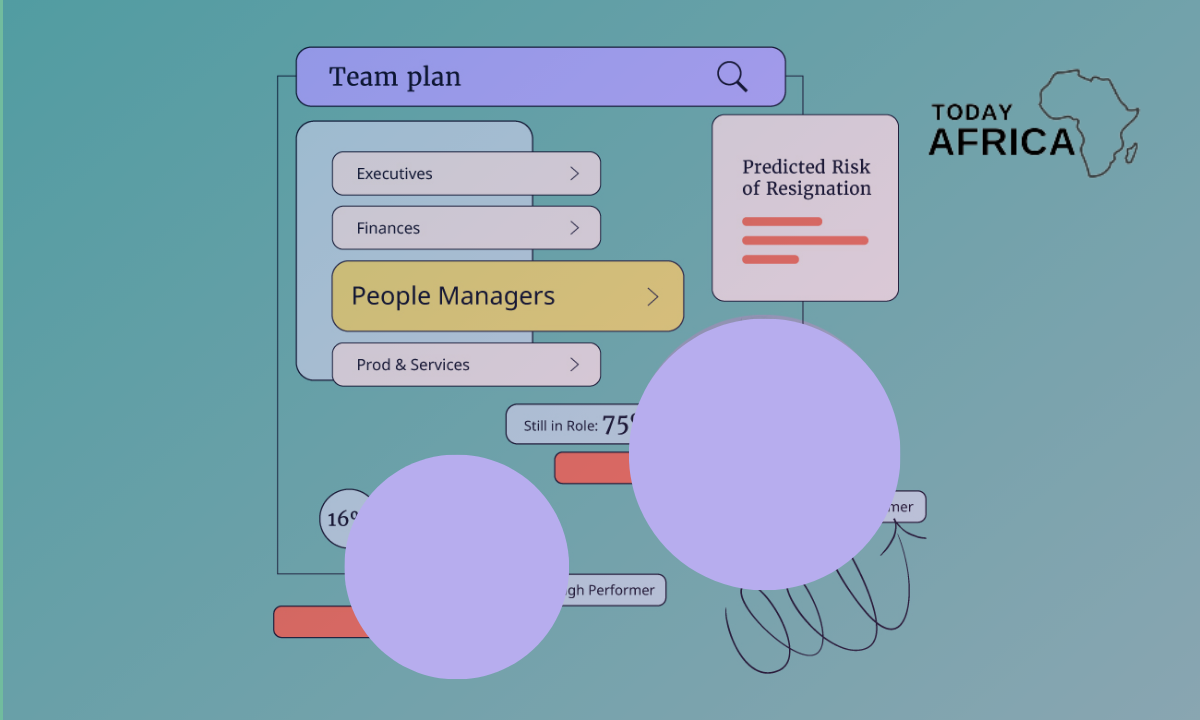As early-stage ventures mature, they transition into “late stage” companies—businesses that have not only proven their product-market fit but have also built substantial revenue streams.
For these startups, revenue isn’t just a vanity metric; it’s the lifeblood that fuels expansion, scaling, and ultimately, successful exits or IPOs.
In this post, we’ll dive deep into the dynamics of late stage tech startups revenues, key revenue models, performance benchmarks, forecasting methods, and strategic approaches that help these companies maximize their revenue potential.
What are Late Stage Tech Startups
Late stage tech startups are distinguished by their advanced growth phase. Unlike early-stage startups, which focus on proving the concept and securing seed funding, late stage companies have achieved significant market traction and typically generate millions in annual revenue.
They attract larger rounds of venture capital, private equity investments, and sometimes prepare for an IPO. These startups often have mature products, a sizable customer base, and a well-defined revenue model that supports their ongoing operations and aggressive scaling.
Key characteristics of late stage tech startups include:
- Substantial revenue streams: These companies usually report annual revenues in the millions, and many are on the cusp of profitability or have already reached it.
- Mature business models: With proven revenue models—be it Software-as-a-Service (SaaS), subscription, transactional, or hybrid—they have refined their pricing and sales strategies.
- Robust customer acquisition and retention: A loyal customer base and effective upsell/cross-sell strategies help boost recurring revenue metrics.
- Larger funding rounds: Late stage companies often secure Series C, D, or even later rounds of funding, as investors look for businesses that are scaling and nearing an exit.
Understanding these characteristics is essential for analyzing revenue performance. For example, cybersecurity startup Wiz reached an impressive $350 million in Annual Recurring Revenue (ARR) in 2023, illustrating the revenue power of a well-established late stage company.
Read Also: What is Guaranteed or Secured Revenue for a Startup
Revenue Models: The Foundation of Financial Success
A clear, well-structured revenue model is the cornerstone of any startup’s financial strategy. For late stage tech startups, the revenue model is not only about generating income—it’s about sustainable growth and long-term profitability. Let’s explore some common revenue models and how they are adapted by mature tech companies.

1. Subscription-based models
Many tech startups, especially in the SaaS arena, adopt subscription-based revenue models. Customers pay a recurring fee (monthly or annually) to access a product or service. This model is particularly effective for companies with high customer retention and predictable usage patterns. With recurring revenue, late stage startups can more accurately forecast cash flow and plan for expansion.
2. Transactional and commission-based models
In the transactional revenue model, revenue is generated each time a product or service is sold. Startups that operate marketplaces or digital platforms may charge a fee or commission on each transaction. This model is scalable and particularly suited for companies with high transaction volumes.
3. Freemium models with upsell opportunities
Many tech companies start by offering a free version of their product to attract users and build market share. Once a substantial user base is established, these companies convert free users to paying customers by offering premium features or services. This model is highly effective when the initial offering is easy to adopt and users see clear value in upgrading.
4. Licensing and white-label solutions
Late stage tech companies with proprietary technology or software may opt to license their product to other businesses. This model can generate steady, predictable revenue while allowing the startup to focus on technology improvements and customer support.
5. Hybrid revenue models
Often, startups mix multiple revenue models to diversify income streams and mitigate risk. For instance, a company might combine subscription revenue with transactional fees or advertising revenue. This approach enables startups to maximize revenue from different customer segments while balancing growth with profitability.
Key Performance Metrics for Revenue Growth
Tracking the right metrics is critical for understanding and optimizing revenue. Late stage tech startups must closely monitor several key performance indicators (KPIs) to ensure that revenue growth translates into long-term success.
1. Annual recurring revenue (ARR)
ARR is one of the most important metrics for subscription-based businesses. It represents the normalized annual revenue from recurring subscriptions and provides insight into the stability and predictability of revenue. High ARR indicates robust customer retention and effective pricing strategies. For instance, as noted earlier, Wiz’s achievement of $350 million ARR in 2023 serves as a benchmark for revenue success in mature tech startups ().
2. Customer acquisition cost (CAC) vs. customer lifetime value (CLTV)
Balancing CAC and CLTV is crucial. A sustainable business model requires that the revenue generated from each customer (CLTV) significantly exceeds the cost of acquiring that customer (CAC). Late stage startups often optimize marketing and sales strategies to reduce CAC while improving customer engagement and retention.
3. Revenue growth rate
The rate at which revenue grows over time is a key indicator of business health. Late stage startups typically show steady, albeit slower, growth compared to early stage companies. However, this growth should be sustainable and outpace inflation and increased operational costs.
4. Churn rate
For subscription-based models, churn rate—the percentage of customers who cancel their subscription over a given period—is an essential metric. A low churn rate means that the company is doing well in retaining its customers, which directly impacts ARR and overall revenue.
5. Average revenue per user (ARPU)
ARPU helps startups understand how much revenue they are generating on a per-customer basis. Increasing ARPU through upselling, cross-selling, or introducing premium features is a common strategy among late stage companies to boost profitability.
6. Upsell and cross-sell rates
The ability to generate additional revenue from existing customers is a sign of strong product-market fit and customer satisfaction. Late stage startups focus on strategies to increase upsell and cross-sell rates, which can drive significant revenue growth without proportional increases in customer acquisition costs.
Read Also: What is an exit strategy in a business plan
Forecasting Revenue: Techniques and Best Practices
Forecasting revenue accurately is both an art and a science. For late stage tech startups, revenue projections are typically based on historical data, current growth rates, and market trends. Here are some best practices:

1. Use historical data
Reviewing past performance is critical. By analyzing historical revenue figures, growth rates, and seasonal trends, startups can create realistic forecasts. For instance, if a startup has consistently grown its revenue by 30% year-over-year, this trend can serve as a baseline for future projections.
2. Incorporate market trends
It’s important to consider industry trends, competitive dynamics, and broader economic factors. The rise of AI, cloud computing, and digital transformation are reshaping revenue potential across various tech sectors. Late stage startups that adapt to these trends are more likely to see accelerated revenue growth.
3. Build dynamic models
Financial models should be dynamic and flexible. Instead of static spreadsheets, consider using software tools that allow for scenario analysis. This approach helps startups understand the impact of various factors (such as changes in pricing, customer acquisition costs, or market saturation) on revenue growth.
4. Benchmark against peers
Comparing revenue performance with peer companies can provide valuable insights. For example, analyzing how other successful late stage startups in the same industry are performing can highlight potential opportunities and challenges. Data from industry reports and case studies can be instrumental in refining projections.
5. Monitor and adjust regularly
Revenue forecasting isn’t a one-time exercise. Regularly review forecasts against actual performance and adjust models as necessary. This continuous feedback loop ensures that projections remain accurate and aligned with evolving market conditions.
Challenges in Maximizing Revenue for Late Stage Startups
Despite having established products and a proven market, late stage startups still face challenges in maximizing revenue. Some common hurdles include:
1. Market saturation and increased competition
As markets mature, competition intensifies. Late stage startups often compete against both established players and new entrants. Differentiating products and sustaining competitive advantages become critical to continue growing revenue.
2. Pricing pressures
Pricing strategies that worked in the early stages may become less effective as the company scales. Late stage startups must continually refine their pricing models to balance profitability with market competitiveness. This might involve tiered pricing, value-based pricing, or bundling of services to appeal to a broader customer base.
3. Operational inefficiencies
Scaling up operations introduces complexity. Late stage startups must invest in infrastructure, talent, and technology to support growing revenue. However, operational inefficiencies—such as high overhead costs or poor integration of systems—can erode profit margins, even if top-line revenue is growing.
4. Customer retention challenges
Even with a proven product, maintaining a high level of customer satisfaction and retention is an ongoing challenge. Increased churn or a decline in upsell opportunities can stall revenue growth. Startups need robust customer support systems and regular engagement strategies to keep their customers loyal.
5. External economic factors
Economic downturns, shifts in consumer behavior, or changes in regulatory environments can all impact revenue. Late stage startups must remain agile and responsive to external factors that may affect their revenue streams.
Strategies to Optimize Revenue Growth
To overcome these challenges, late stage tech startups can employ several strategies to optimize revenue growth:
1. Focus on customer success
Investing in customer success initiatives ensures that users derive maximum value from the product. Providing excellent customer support, regular updates, and educational resources can help reduce churn and create opportunities for upselling. Establishing a dedicated customer success team can drive improvements in both retention and ARPU.
2. Diversify revenue streams
Relying on a single revenue model can be risky. Diversifying revenue streams—by combining subscriptions, transaction fees, and licensing, for example—can create a more resilient revenue base. This diversification helps mitigate risks associated with market fluctuations and operational challenges.
3. Leverage data analytics
Data is the new currency for optimizing revenue. By using advanced analytics and machine learning tools, startups can gain insights into customer behavior, optimize pricing strategies, and predict market trends. Data-driven decision making enables companies to fine-tune their revenue models and allocate resources more efficiently.
4. Innovate with new product offerings
Continuous innovation is key to staying ahead of the competition. Late stage startups should invest in research and development to create new products or enhance existing ones. Expanding the product portfolio can open up new revenue channels and attract different customer segments.
5. Strengthen strategic partnerships
Forming strategic alliances and partnerships can help expand market reach and create new revenue opportunities. Partnerships with larger enterprises, distribution channels, or complementary tech companies can provide access to new customers and reduce customer acquisition costs.
6. Optimize sales and marketing
A well-coordinated sales and marketing strategy is essential for driving revenue. This includes targeted digital marketing campaigns, content marketing strategies, and account-based marketing initiatives. Late stage startups should continuously optimize their sales funnels, experiment with different channels, and invest in technologies that improve lead generation and conversion rates.
7. Streamline operations
Improving operational efficiency directly impacts revenue. Streamlining processes, automating routine tasks, and investing in scalable infrastructure can reduce costs and improve margins. This is particularly important as revenue grows; maintaining a lean operational model helps ensure that increased revenue translates into higher profits.
8.Adapt to market conditions
Flexibility is crucial in a rapidly changing market. Late stage startups must be prepared to pivot their strategies in response to economic shifts, technological advancements, or competitive pressures. Regularly revisiting the business model, updating financial forecasts, and staying informed about industry trends are essential practices for sustained revenue growth.
Read Also: Top 5 Investment Opportunities in Ghana
Real-World Case Studies and Examples
While every startup’s journey is unique, several high-profile examples provide insights into successful revenue strategies.

1. OpenAI
OpenAI, now a household name in artificial intelligence, has experienced rapid revenue growth despite operating at a loss. The company’s journey highlights the importance of revenue forecasting and the challenges of balancing growth with high operational costs.
OpenAI’s subscription service for ChatGPT has helped the company scale its revenue quickly, even as it invests heavily in technology and infrastructure. The case of OpenAI demonstrates that late stage startups in cutting-edge industries may prioritize rapid revenue growth while still working toward profitability ().
2. Wiz
Cybersecurity startup Wiz offers another compelling example. By focusing on cloud security and leveraging a transactional revenue model combined with subscription services, Wiz rapidly scaled its ARR to $350 million in 2023.
This success is attributed to strong customer acquisition strategies, continuous product innovation, and effective upsell techniques. Wiz’s performance illustrates how late stage startups can achieve significant revenue milestones by capitalizing on market trends and robust financial planning.
3. Applied Intuition
Applied Intuition, a leader in autonomous vehicle software, has demonstrated how technology companies can drive revenue through a combination of simulation tools and strategic partnerships with major automakers.
With recurring revenues from licensing and service contracts, the company has secured a valuation of $6 billion after closing substantial funding rounds. Its partnerships with industry giants such as Porsche, Audi, and Isuzu further bolster its revenue potential, showcasing the importance of collaborative growth strategies in late stage startups.
Future of Revenue for Late Stage Tech Startups
Looking ahead, late stage tech startups will continue to face both opportunities and challenges. Several trends are likely to shape the revenue landscape in the coming years:
1. Emphasis on AI and automation
Artificial intelligence and automation are set to revolutionize the way companies generate and optimize revenue. From predictive analytics to automated customer service and dynamic pricing, AI-powered tools will enable startups to refine their revenue models and respond more quickly to market changes. However, as seen in some recent analyses, while AI promises rapid revenue growth, the high costs associated with computing infrastructure may continue to pose challenges for profitability.
2. Expansion into global markets
Globalization remains a key growth driver. Late stage startups are increasingly looking beyond domestic markets to tap into international revenue streams. Expanding into new geographies not only diversifies risk but also provides access to larger customer bases. Startups that adapt their products to meet local market needs and regulatory requirements can unlock significant revenue potential.
3. Increasing investor scrutiny
As late stage companies mature, investors become more discerning. Revenue growth must be accompanied by operational efficiency and sustainable profit margins. Startups will need to present robust revenue forecasts, clear pathways to profitability, and well-structured financial models to secure further investment or successful exits. This heightened scrutiny is likely to drive improvements in financial discipline and transparency across the industry.
4. Integration of multiple revenue streams
The future belongs to startups that can effectively integrate multiple revenue streams. Combining subscription revenue with transactional fees, licensing, and advertising can provide a more stable and diversified income base. This integrated approach not only mitigates risks associated with market volatility but also enhances customer lifetime value and overall revenue performance.
5. Focus on customer-centric innovations
Ultimately, revenue growth is driven by customer satisfaction. Late stage startups will continue to invest in customer-centric innovations—whether through enhanced product features, improved user experiences, or tailored service offerings. The companies that excel at understanding and addressing customer needs will be best positioned to maximize revenue and build lasting competitive advantages.
Best Practices for Sustaining Revenue Growth
For late stage tech startups determined to sustain revenue growth, the following best practices can make all the difference:

- Invest in continuous product improvement: Regularly update your product or service to keep pace with technological advancements and evolving customer needs.
- Leverage advanced analytics: Use data analytics to identify revenue opportunities, optimize pricing strategies, and improve customer targeting.
- Enhance customer experience: Prioritize customer support, training, and engagement to reduce churn and boost upsell opportunities.
- Diversify revenue channels: Avoid reliance on a single revenue stream. Explore complementary models to create a more robust revenue portfolio.
- Adopt a flexible financial model: Build dynamic financial models that can adapt to changes in market conditions and internal growth dynamics.
- Strengthen strategic partnerships: Collaborate with industry leaders and complementary service providers to expand market reach and drive new revenue.
- Monitor and optimize operational efficiency: Streamline processes and invest in scalable infrastructure to ensure that revenue growth translates into improved profit margins.
Conclusion
In an era where investors demand both rapid revenue growth and operational discipline, late stage tech startups must balance ambition with realism. By implementing best practices and staying responsive to market trends, these companies can continue to build impressive revenue streams that ultimately lead to successful exits or public offerings.
For founders, executives, and investors alike, understanding the intricacies of late stage tech startups revenues is not just about measuring success—it’s about setting the stage for the next phase of growth. With a clear revenue strategy in place, the potential for innovation, market expansion, and sustainable profitability is virtually limitless.
So whether you are a startup founder aiming to scale or an investor evaluating high-growth tech ventures, the focus on robust revenue models, disciplined forecasting, and continuous customer engagement is paramount. Late stage tech startups that master these elements are well on their way to achieving not only impressive revenue milestones but also long-term success in a competitive digital economy.
For more insights on startup strategies and funding, subscribe to our newsletter:
- Facebook: Today Africa
- Instagram: Today Africa
- Twitter: Today Africa
- LinkedIn: Today Africa
- YouTube: Today Africa Studio
















